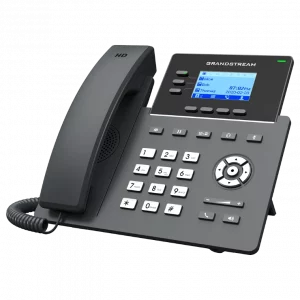
SIP Setup For Your Business Communications
According to Tech.co, businesses can reduce the cost of international calls by up to 90%. On average, businesses see savings of between 50-70% when they switch to VoIP. However, smaller businesses often reap the benefits of much more savings.
Companies of all sizes are relying on telecommuting services to reduce their spending and increase their savings. For example, Dell saved $39.5 million by adopting telecommuting technologies.
Using SIP has many benefits and may be easier than you think. If you want to reduce your business costs, keep reading to find out how you can go about a SIP setup for your business and to learn more about SIP trunking.
SIP Trunking Basics: What is SIP Trunking?
Session Initiation Protocol (SIP) uses multimedia communications over the internet. Voice and data can be shared and transferred over the public internet or private IP networks.
SIP trunking is similar to a traditional phone line, in that it is a form of communication. However, you don’t need a phone line as it instead uses your internet connection.
Businesses across the world rely on SIP trunking because it offers scalability and flexibility, at an affordable price. In fact, over 65% of businesses across the US, UK, Canada, India, South Africa, Australia, and other parts of the world, are now using SIP trunks.
SIP multimedia communications provide a variety of functions, which make running your business easier. For example, SIP allows users to show their availability and can identify what functionalities a user’s device can support and set up the call to suit that. SIP can also connect, disconnect, transfer, and modify communications.
SIP trunks are virtual, which means that you can use as many lines as you need. It also means that you don’t need to pay more for lines that you don’t use, as you can cancel ones that are no longer in use.
Check out this article for more information on what SIP trunking is and how it can benefit your business.
What Are the Main Benefits of SIP?
SIP trunking is used by a variety of different businesses and can have many benefits.
For example, the hospitality industry such as hotels can benefit from lower communication costs and greater quality calls. This is a significant benefit for hotels that have a lot of international guests.
In general, businesses can expect to reap these main benefits from SIP:
- Save money on your communications. SIP offers a cheaper alternative to traditional phone lines and can save your business thousands of dollars.
- See an immediate return on investment. SIP is a well-established technology and it comes with minimal upfront costs.
- Opportunity for scalability. SIP allows users to connect wherever they are, so you don’t need to worry about setting it up in new locations.
- Chance to promote flexible working. SIP offers more flexibility for your employees as they can access it from their mobile devices.
- Ease of use. SIP provides an easy-to-use service that allows users to adjust call routing, change extensions, and add phone lines.
As you can see SIP has many benefits that can help your business and even help to develop the growth of your company. SIP is ideal for businesses across all industries no matter where they are in the world.
How to Setup a SIP Trunk
SIP trunking isn’t as hard as you might think to set up. There are three ways you can go about setting up your SIP trunk.
Some SIP trunk providers offer to set it up themselves. If your SIP provider doesn’t offer this service then you might want to hire an IT specialist. Alternatively, you might want to do it yourself.
Although, if you are going to set up your SIP by yourself, then make sure you have the right documentation and information beforehand.
According to ExpertIP, the key to a successful rollout of SIP migration is good planning, good support, and a good service provider. Many issues when setting up SIP are caused by a misconfiguration or following incomplete/out-of-date documentation.
Setup SIP with Your Provider
Some SIP providers offer assistance with the setup. If you feel like this is the best option for you, then make sure you find a provider who offers this option.
Different providers offer different levels of customer support and technical assistance. You might be able to find a provider with online guides or forums that can help you. Alternatively, you can contact them and ask them about your queries.
Hire an IT Specialist
If you want someone with expert knowledge to install your SIP then you could hire a freelance IT specialist or find an IT outsourcing company.
Hiring an IT specialist will mean you pay additional costs, depending on the service they provide. However, this might be worthwhile if you think that it will take too long to set up by yourself.
Set it up Yourself
If you feel like you have a good knowledge of IT management and coding skills, then it is possible that you can set it up yourself. Setting up SIP might require you to have worked in IT or software development, as it can be tricky.
To start with, you’ll need:
- a computer with an internet connection
- your PBX, SIP trunk, and VoIP phone system account details
- your IP address
- a gateway (to connect a non-IP phone system).
After this, you can then start setting up your SIP trunk. Follow our general guide, but remember to check if your SIP provider has specific steps to their product.
- Firstly, you need to log into your PBX system and select the trunks option.
- Create and add a SIP trunk (this will connect the system externally).
- Give the trunk an appropriate name (i.e. your business’s name). Then set the outbound caller ID (your business’s phone number).
- Set the maximum number of channels.
- Enter SIP peer details (this is how the systems talk to each other).
- Register the trunk. You might need to register with the VoIP provider to register your trunk, this might be called a register string.
- Click submit changes and then click apply the configuration. Once the configuration is complete, the trunk is set up and the PBX can connect to receive and make calls.
You can also set the outbound and inbound routes after you’ve set up your SIP trunk. These outbound and inbound routes allow the PBX to send phone calls to the right places. This is especially important if your system has multiple trunks.
To set up these routes, follow our guide:
- To begin with, you need to check the registries or console commands for code
- Then you can create an outbound route and give it a name.
- You then need to create dial patterns for the phone numbers and select the area code.
- Select the trunk and click submit changes. Then click apply the configuration.
- Then you can create an inbound route. Similar to the outbound route, you need to determine the trunk selection and name the route.
- Select the appropriate extensions and click submit. And once again apply the configuration.
Once you set up the inbound and outbound routes, you’ll need to test them. You can do this by using an operator panel and checking the call status.
Tips for your SIP Setup
Setting up your SIP can be done efficiently so long as you follow guides on how to do it. To ensure that your SIP setup goes as smoothly as possible, check out our most helpful tips.
The most common problem people have when setting up their SIP trunks is that their equipment doesn’t support it. Before you start, make sure that you’re using a firewall and an internet connection that can support SIP trunking.
Another common problem people face is that they don’t have the right SIP port. To connect remote extension via a direct SIP you need to open either Port 5060, Port 5061, or Port 9000-10999.
Remember to keep your IP address and SIP log in details safe and secure. This will help your business to prevent getting hacked and having someone steal your data. Make sure your passwords are strong and aren’t shared with anyone.
The server status is where you’ll find any errors or issues, so be sure to check it whilst you’re setting up your SIP. And don’t set up your SIP trunk account details until your server status is confirmed.
Finally, remember to save changes that you make as you go. This will help to avoid losing your SIP setup.
Get Your SIP Setup Now
SIP trunking isn’t that hard to set up and can start to impact the way you run your business from day one. Follow our guide and get your SIP setup sooner rather than later, so you too can start enjoying the benefits of SIP trunking.
Contact our friendly team today to find out how SIP trunking can help your business.


